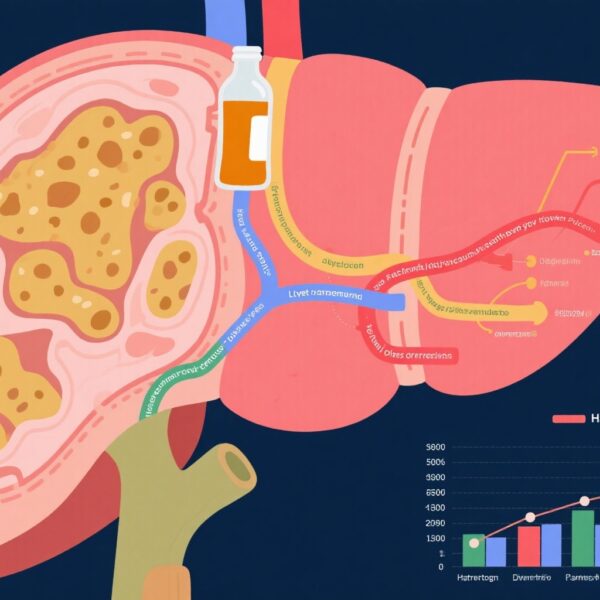Highlight
• In 2023, only 55.8% of people with diabetes globally were diagnosed, indicating substantial underdiagnosis.
• Among those diagnosed, over 90% received treatment, but only 41.6% of treated patients achieved optimal glycaemic control.
• Significant regional disparities exist, with high-income regions performing better in diagnosis and treatment outcomes.
• Over two decades, diagnosis and treatment rates improved modestly, but optimal glycaemic control remains largely unchanged.
Study Background
Diabetes mellitus continues to present a formidable challenge to global health, contributing significantly to morbidity, mortality, and disability worldwide. The disease’s rising prevalence, fueled by aging populations, urbanization, and lifestyle changes, has been accompanied by considerable variability in healthcare access and quality across regions. Effective diabetes management hinges on a cascade of care steps: timely diagnosis, initiation of evidence-based treatment, and achievement of optimal glycaemic control to prevent complications. Despite advances in diabetes therapeutics and technologies, gaps persist in these stages, undermining the control of the disease and amplifying its personal and societal burden.
Study Design
This systematic review and modeling analysis utilized data spanning 2000 to 2023 from the Global Burden of Diseases, Injuries, and Risk Factors Study (GBD), encompassing 204 countries and territories. The research synthesized information from representative cross-sectional surveys, published studies, and grey literature to estimate the diabetes care cascade components: proportions of people undiagnosed, diagnosed but untreated, treated with suboptimal glycaemic levels, and treated with optimal glycaemic levels.
Treatment was defined as current use of insulin or other hypoglycaemic agents. The hierarchical Bayesian meta-regression tool DisMod-MR 2.1 was employed to model these proportions by location, year, age, and sex. To contextualize findings, estimates were scaled to reflect the total population living with diabetes in each stratum according to GBD 2023 data. The study calculated key cascade metrics including diagnosis rates among all people with diabetes, treatment initiation among those diagnosed, and achievement of optimal glycaemic control among those treated.
Key Findings
In 2023, an estimated 55.8% (95% uncertainty interval [UI], 49.3%–62.3%) of people aged 15 years and older with diabetes worldwide were diagnosed, revealing that nearly half remained unaware of their condition. Among diagnosed individuals, 91.4% (88.0%–94.2%) were on treatment, indicating good healthcare engagement post-diagnosis globally. However, only 41.6% (35.7%–48.5%) of those treated achieved optimal glycaemic concentrations. Consequently, just 21.2% (17.4%–25.6%) of all people living with diabetes demonstrated good glycaemic control on treatment.
Regional disparities were pronounced. High-income North America exhibited the highest diagnosis rate, reflecting robust screening and awareness programs. High-income Asia Pacific showed the highest treatment uptake among diagnosed individuals, likely due to well-developed healthcare infrastructures. Southern Latin America led in optimal glycaemic control rates among treated patients, possibly due to effective management protocols. Conversely, low- and middle-income countries lagged substantially across all cascade steps, signaling systemic barriers.
Temporal trends from 2000 to 2023 demonstrated progress: diagnosis rates increased by 8.3 percentage points (6.6–10.0), treatment initiation by 7.2 points (5.7–8.8), while optimal glycaemic control improved marginally by 1.3 points (0.8–1.8). These modest gains suggest that while more people are being identified and treated, achieving meaningful glycaemic control remains a significant hurdle. Disparities by age and sex also persisted, underscoring the need for tailored interventions.
Expert Commentary
These findings underscore critical challenges in diabetes care despite global efforts. The high rate of undiagnosed diabetes highlights gaps in screening and case-finding, particularly in underserved populations. Even with high treatment uptake, the limited success in achieving optimal glycaemic control points to issues such as treatment adherence, medication access, healthcare quality, and patient education. Moreover, the wide regional differences reveal how socioeconomic factors, health system capacity, and policy environments shape outcomes.
The use of DisMod-MR 2.1 for hierarchical Bayesian meta-regression enabled robust and nuanced modeling of complex data sources, but inherent limitations include reliance on variable-quality surveys and potential underestimation of undiagnosed cases in low-resource settings. Future research should focus on longitudinal cohort studies and implementation science to elucidate barriers and test strategies in real-world settings.
Conclusion
Despite incremental improvements in diabetes diagnosis and treatment over the last two decades, major gaps remain in the global cascade of diabetes care. Underdiagnosis and suboptimal glycaemic management particularly afflict low- and middle-income countries, where growing prevalence threatens to overwhelm health systems and exacerbate health inequities. Strengthening health system capacities—through enhanced screening, equitable access to affordable medications, patient-centered care models, and health education—is urgently needed. Addressing these gaps presents an opportunity to reduce diabetes-related complications, improve quality of life, and alleviate the disease’s global burden.
Funding and ClinicalTrials.gov
This work was supported by the Bill & Melinda Gates Foundation. No clinical trial registration applies to this modeling analysis.
References
Stafford LK, Gage A, Xu YY, et al. Global, regional, and national cascades of diabetes care, 2000-23: a systematic review and modelling analysis using findings from the Global Burden of Disease Study. Lancet Diabetes Endocrinol. 2025 Nov;13(11):924-934. doi:10.1016/S2213-8587(25)00217-7.
International Diabetes Federation. IDF Diabetes Atlas, 11th edition. Brussels, Belgium: 2023.
Sartorius K, Veerman JL. The global burden of diabetes mellitus and the impact of health-care interventions. Glob Health Action. 2019;12(1):1601767.
Cho NH, Shaw JE, Karuranga S, et al. IDF Diabetes Atlas: Global estimates of diabetes prevalence for 2017 and projections for 2045. Diabetes Res Clin Pract. 2018;138:271-281.



